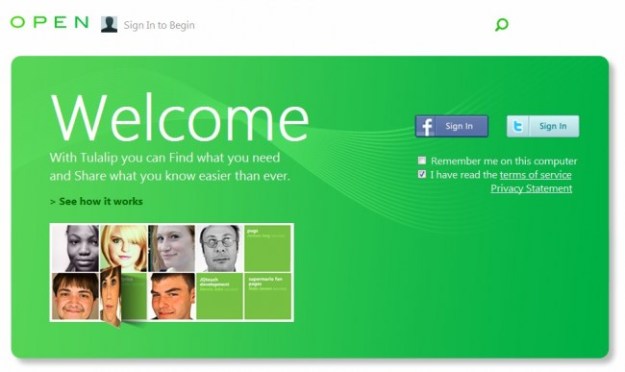
Microsoft inadvertently published a splash page for a new social network called “Tulalip” on Thursday to the URL Socl.com, reports Fusible. The page has since been taken down. In its place, Microsoft has left a cheeky message for visitors.
“Thanks for stopping by. Socl.com is an internal design project from a team in Microsoft Research which was mistakenly published to the web. We didn’t mean to, honest,” the message reads.
As others have noted, it seems highly unlikely that Tulalip is simply an “internal design project.”
First of all, “internal design project” could simply mean that Microsoft is designing a new service, therefore; it’s an internal design project.
As far as actual evidence goes, the now-removed splash page says, “With Tulalip you can Find what you need and Share what you know easier than ever.” It also shows Facebook and Twitter buttons for signing in, as well as other standard social network caveats, like terms of service agreements, a “remember me on this computer” box to check, and a politically correct mix of “real” individuals looking coyly quirky. On top of all that, the layout of the images looks suspiciously similar the new “Tiles” design of Windows Phone 7.
Plus, the domain for the splash page, Socl.com, is the word “social,” or at least a hip shortened version.
Search Engine Land‘s Matt McGee discovered that Tulalip is, indeed, an app from Microsoft Research. McGee uncovered the Twitter authorization screen for the app, which says that users will be able to use Tulalip to do much of the same things they can do with Twitter, like “read Tweets from your timeline,” and “see who you follow, and follow new people.” If you ask us, that says basically nothing.
The gut reaction is to jump to the conclusion that Microsoft is preparing to launch a competitor to Google+. Which they may very well be. But we’re just going to have to sit back, and wait to see what happens when Tulalip isn’t “internal” anymore — or at least until they “accidentally” leak some more info.
Editors' Recommendations
- What is Section 230? Inside the legislation protecting social media
- Practically every major social app has a Stories function now. This is why
- A new Senate bill would fundamentally change the internet as we know it


